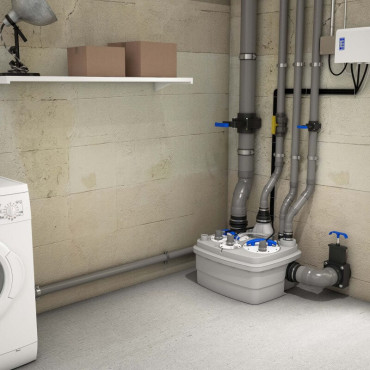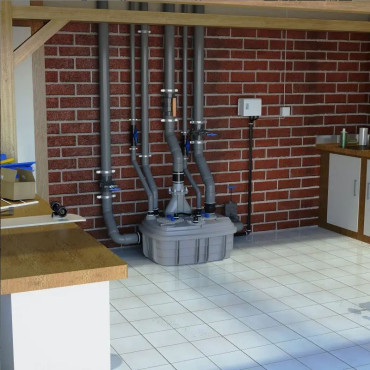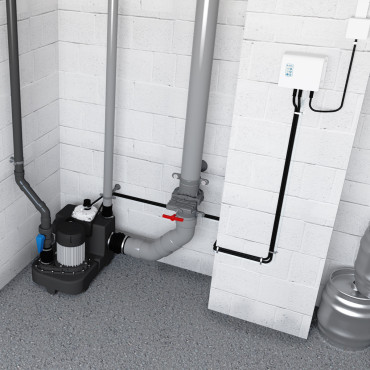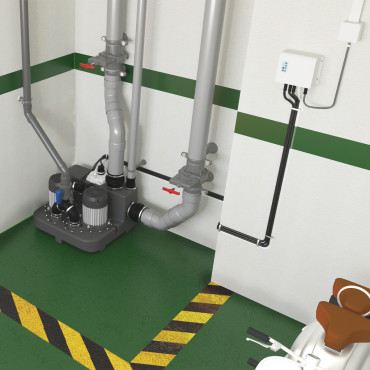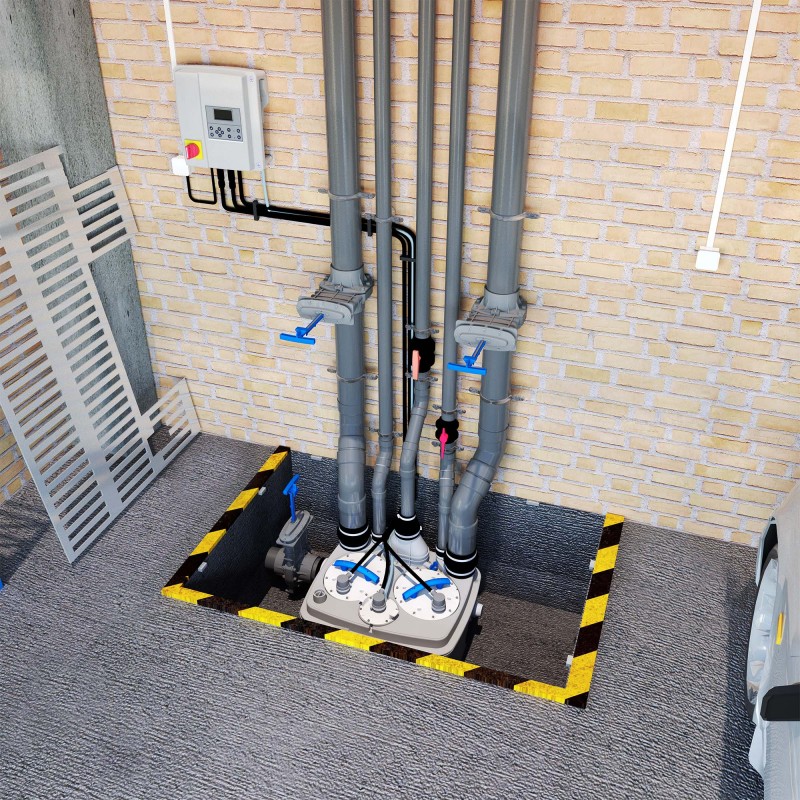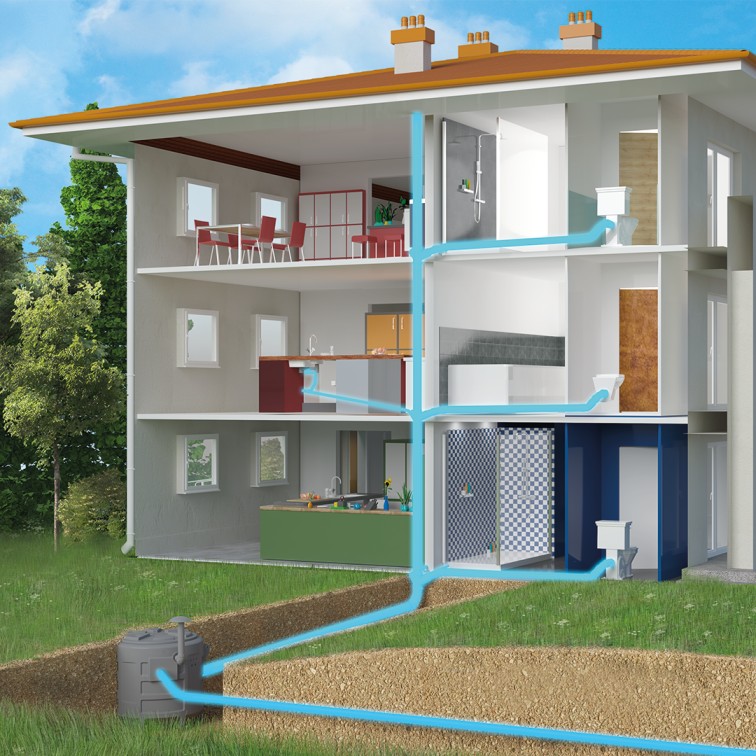Advantages of installing SFA Lifting Station:
● Compact Design: SFA lifting stations are designed to be compact so that they can save space and fit in limited spaces. This allows for flexible installation in areas with limited space, such as basements or utility rooms.
● Robust Construction: Our lifting stations are designed to withstand the rigors of handling wastewater and can effectively manage the demands of various applications.
● Easy Installation and Maintenance: SFA products are designed for easy and quick installation. They eliminate the need for substantial digging and major renovations, making it simpler to add bathrooms and kitchens in locations far from the main sewer line.
● Pumping Technology: SFA lifting stations utilize advanced pumping technology to efficiently move wastewater from lower to higher elevations.
● Alarm System: Many SFA lifting stations are equipped with alarm system. These systems provide alerts in case of pump failure, high water levels, or other issues, allowing for timely intervention and preventing potential flooding.
Common applications of the Lifting Stations:
● Below-Ground Installations: In buildings or facilities with below-ground levels, such as parking garages or underground commercial spaces, lifting stations are essential for collecting and pumping wastewater to the appropriate drainage system.
● Basements: Lifting stations can be used in basements where the natural slope of the terrain makes it challenging to achieve effective gravity drainage. These stations collect wastewater from bathrooms, laundry rooms, and other fixtures in the basement and lift it to the main sewer line.
● Hospitals and Healthcare Facilities: Healthcare facilities, including hospitals and clinics, often have specific requirements for wastewater management. Lifting stations can be used to ensure efficient and hygienic disposal of medical wastewater from various sources within the facility.
● Commercial Buildings: Commercial buildings, especially those with multiple floors or complex layouts, may use lifting stations to collect and pump wastewater from different levels to the main sewer line.
● Dental and Medical Offices: In medical or dental offices where there may be specialized fixtures that require specific drainage solutions, Sanivite pump can provide a reliable option.
● Hotels and Resorts: In hospitality settings like hotels and resorts, lifting stations can be employed to manage the diverse wastewater generated from guest rooms, kitchens, laundry facilities, and recreational areas.
● Public Restrooms: Our pump can be installed in public restrooms, especially in locations where the restroom is situated below the sewer line.
● Shopping Malls: Large commercial spaces like shopping malls with multiple levels can use lifting stations to handle the wastewater generated by restrooms, food courts, and other facilities throughout the building.
Frequently asked questions (FAQs):
Q 1. How does an SFA lifting station work?
A: The SFA lifting station pumps wastewater from toilets, sinks, and other plumbing fixtures to an elevated sewer line. It consists of a macerator and a pump that break down and lift the wastewater.
Q 2. Can an SFA lifting station handle both blackwater and greywater?
A: Yes, SFA lifting stations are designed to handle both blackwater (from toilets) and greywater (from sinks, dishwashers, etc.).
Q 3. Can an SFA lifting station be retrofitted into an existing building?
A: Yes, SFA lifting stations are designed for retrofitting into existing structures. However, it's crucial to assess the plumbing layout and requirements before installation.
Q 4. Are there any limitations to the distance or height that an SFA lifting station can pump wastewater?
A: Each model has specific limitations on pumping distance and height. It's essential to check the product specifications to ensure it meets the requirements of your installation.
Also read:
Blog 1: Basement Applications: Unveiling the Benefits and Installation of Lifting Pump in the Basement
Blog 2: Exploring the Key Features of SFA India Lifting Stations: A Breakdown


